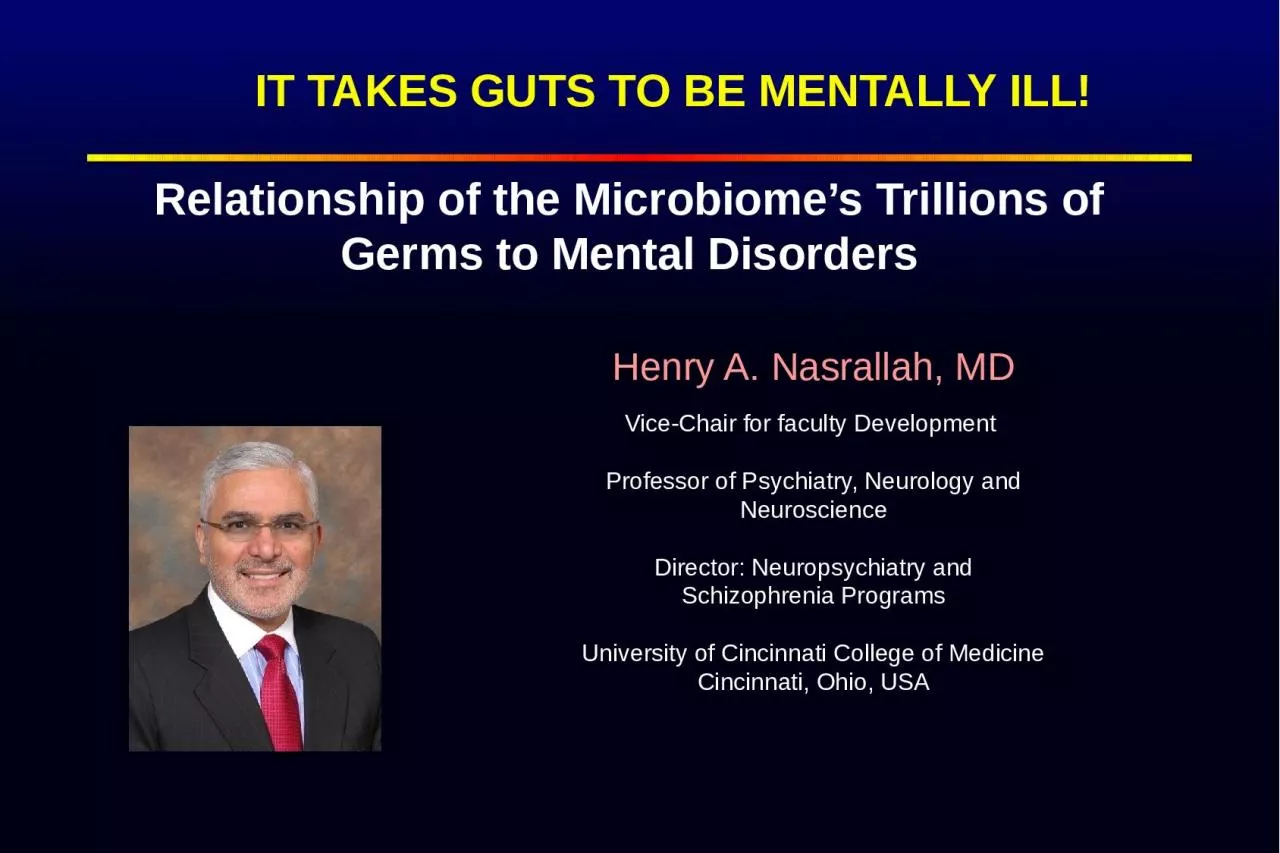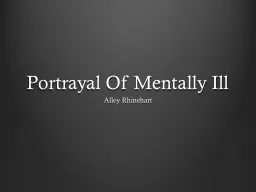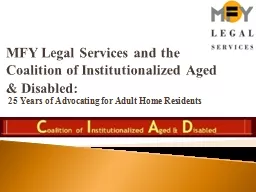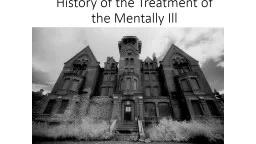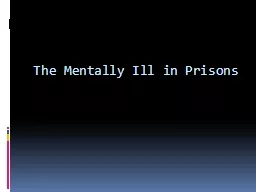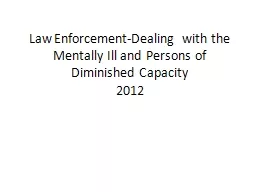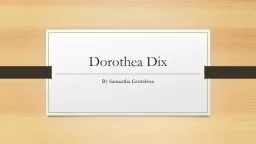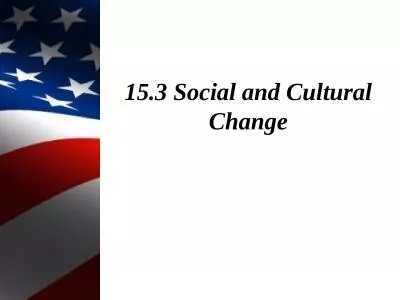PPT-IT TAKES GUTS TO BE MENTALLY ILL!
Author : cecilia | Published Date : 2024-01-29
Relationship of the Microbiomes Trillions of Germs to Mental Disorders Henry A Nasrallah MD ViceChair for faculty Development Professor of Psychiatry Neurology
Presentation Embed Code
Download Presentation
Download Presentation The PPT/PDF document "IT TAKES GUTS TO BE MENTALLY ILL!" is the property of its rightful owner. Permission is granted to download and print the materials on this website for personal, non-commercial use only, and to display it on your personal computer provided you do not modify the materials and that you retain all copyright notices contained in the materials. By downloading content from our website, you accept the terms of this agreement.
IT TAKES GUTS TO BE MENTALLY ILL!: Transcript
Download Rules Of Document
"IT TAKES GUTS TO BE MENTALLY ILL!"The content belongs to its owner. You may download and print it for personal use, without modification, and keep all copyright notices. By downloading, you agree to these terms.
Related Documents

